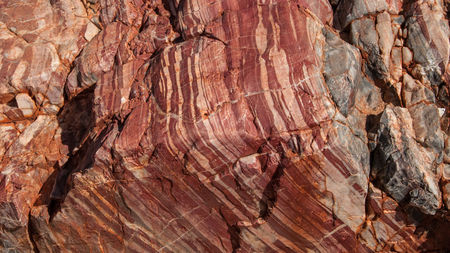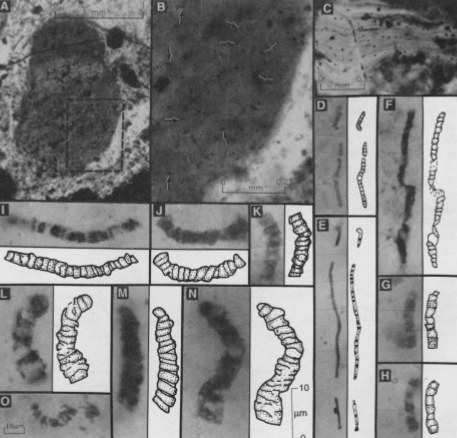December 28, 2017 – If the U.S. military had proof that those Unidentified Flying Objects (UFOs) reported on in their files were signs of other intelligent life in the Universe, Australian researchers may have found the reason why sophisticated, alien technical civilizations exist.
Why? Because the microorganisms identified in Australian fossils, dating back almost 3.5 billion years, indicate the proliferation of living creatures in the first billion years of Earth history.
As reported in the journal Proceedings of the National Academy of Sciences (PNAS), scientists from UCLA and University of Wisconsin discovered 11 species of primitive microorganisms. Two species displayed photosynthesis-like processes, another generated methane gas, and two others consumed methane to create cellular wall structures. The fossils were found in Western Australia in banded Apex Chert rock formations. These are, to-date, the oldest known fossils of life on Earth.

States J. William Schopf, Professor of Paleobiology at UCLA, the evidence discovered provides “the first data that show the very diverse organisms at that time in Earth’s history …. This tells us life had to have begun substantially earlier and it confirms that it was not difficult for primitive life to form and to evolve into more advanced microorganisms.” Schopf concludes, “if the conditions are right, it looks like life in the Universe should be widespread.”
To find out what made these primitive microorganisms click, the researchers used a secondary ion mass spectrometer (SIMS), separating the carbon in the fossils and measuring the ratio of various isotopes. At the time these microorganisms lived the Earth had not yet developed a significant amount of oxygen. The photosynthesis capability of these microorganisms was probably the catalyst for the chemistry of Earth’s atmosphere to change over the next billion years or so. But the organisms would have had to evolve an ability to deal with the toxicity of oxygen as they expelled it.

Not all scientists agree that what is seen in these images is life. Some believe what we are looking at is very strange minerals that happen to look like fossils.
But if Schopf and his colleagues representing two university research teams are right, they have provided the most detailed study ever conducted on Archaea dating back to Earth’s early history.
Archaea is a classification of living creatures that today are referred to as extremophiles. They live in environments inhospitable to other life on the planet. You can find them on the surface of Earth living in hot springs, or at the bottom of the ocean congregating around black smokers. Or you find them in extreme alkaline and acid environments.
Archaea can also be found in the intestines of ruminant mammals like cows. It is they who contribute the vast amounts of methane to our atmosphere from cow farts.
And we can even find different species of Archaea in plankton.
But for the most part, Archaea thrives where no oxygen is present. That would explain why one would find them in Earth’s past when there was very little atmospheric oxygen.
So if indeed what Schopf and his colleagues have found are primitive life forms inhabiting Earth going back that length of time, it is highly likely that similar processes have led to life happening elsewhere in environments akin to what existed in our planet’s early history.
One cannot help but wonder about Saturn’s largest moon, Titan, with its methane seas. Could it be possible that Archaea are alive and well on Titan to this day, thriving in its extreme cold by digesting and using methane to replicate?
Or in the traces of methane periodically detected by our Mars orbiters, are we measuring the exhalations of Archaea still very much alive on the Red Planet?
Schopf and his colleagues don’t answer the question of more advanced life arising from Archaea. We certainly know it happened here on Earth. That should suggest it likely has happened elsewhere. And given the billions of years between life’s first appearance and today, could intelligent life capable of more sophisticated space travel than us be visiting here after all?
I remain a skeptic about aliens being the likely explanation for UFOs, but I am more than convinced that life populates our Universe, and that intelligent life on some planet or moon circling a distant star is staring up at the night sky and wondering if we exist somewhere in the cosmos.








